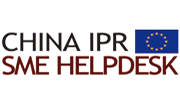28 September, 2017
Today’s blog post will sum up our Wine series that we have been running for the past couple of weeks and discusses the future of IP protection in the wine industry.
Wine counterfeiting in China is at a critical stage for the European wine industry. In recent years we have had a taste of what Chinese consumption means to the European producers, with over a quarter of a billion litres of European wine consumed annually by what represents only a fraction of the potential market in China. As the market moves from commodity and gift wines to drinking ‘table’ wine, so do the counterfeiters, flooding supermarkets and restaurants with wines bearing (often validly registered) appellation marks which have no connection to the liquid inside the bottle.
Chinese palates are at a crucial developmental stage, and exposure to poor quality counterfeits of European wine not only damages profits, but also poisons the reputation of European producers in the Chinese marketplace. Competition with domestic producers is already fierce, and Europe’s wine industry can no longer afford to stand by and let this threat go unchallenged.
As we saw in our ‘Terroir IPR’ articles, producers do not stand alone in the fight against counterfeiting, and national agencies such as INAO, as well as regional regulatory bodies such as the CIVB are in working to register GIs and combat the most obvious fraudsters. These two organisations are a minority however, and their pockets alone are not deep enough to fund a comprehensive campaign. Without support of more organisations, and ultimately the producers they serve, they can only do so much to slow the poisonous effects of counterfeiting in China.
Enforcement expert Thomas Jullien and his team have worked for years for the CIVB to combat counterfeiting through traditional IPR protection, focussing on GI registration and enforcement to protect as many producers as possible under these invaluable collective marks. They have struggled however, with the lack of knowledge of wine and wine counterfeiting which is common amongst officials in China’s 2nd and 3rd tier cities and have struggled to persuade reluctant officers to shut down even relatively large scale infringers.
Experienced litigator Dr. Paolo Beconcini tells us that this is a problem which can be remedied, provided that the wine industry appoints representatives to attend working groups with committees such as the Quality Brands Protection Committee of China (QBPC), and Interpol’s China and South-East Asia Trafficking of Illicit Goods and Counterfeiting Sub-directorate. These groups, among others, provide industry representatives with an effective platform from which they can address enforcement officials and educate them on how best to recognise genuine products and identify counterfeits in their respective jurisdictions, thereby ensuring greater chances of cooperation and increasing the chances of independent action.
Dr. Beconcini also advocates a more direct approach to dealing with larger infringers, bringing to bear the full weight of the Chinese IPR legal system, bulked out by Beijing’s enthusiasm to tackle food and beverage counterfeits. For long term success, large scale counterfeiters should be made example of, with litigators seeking the greatest penalties and the greatest publicity, thereby sending a message to would-be infringers that such actions will not go unpunished.
Other experts, such as Nick Bartman have offered alternative solutions which take advantage of China’s continual development and strengthening of consumer protection laws. A spate of food and beverage scandals in recent years has led to the rapid development of a competent, reactive enforcement authority which can operate independently of producer instruction, requiring only proof of mislabelling of bottles and intent to mislead consumers as to the origin and quality of the products in question. The genius of this method lies in its simplicity, requiring only a letter of complaint (ideally drafted by a qualified legal professional) to the local enforcement bureau, after which the investigation and prosecution will be dealt with entirely by local officials.
As Bartman points out however, selling wine in China is not just about filling orders and shipping products, it is a complete project. With the level sophistication displayed by the now well established counterfeiting industry, it is important for the wine industry as a whole to remain vigilant, monitoring the market for counterfeit products and reacting intelligently and effectively against threats to their collective interests.
What all our experts agree on however, is that all efforts to combat infringement are hindered at present by the lack of concrete data of the situation on the ground. I myself would be hesitant to instruct experienced businesses or legal professionals, but from the information and opinions gathered over the course of this series, it seems that lack of data has paralysed the wine community, members of which are unwilling to commit resources without concrete evidence of the damage caused by counterfeiting.
Of course, this is by no means a simple task, the expertise exists, in organisations such as Wine Intelligence[1] and other experienced industry research bodies capable of delivering comprehensive market reports[2]. With the European wine industry losing traction in the Chinese market, a first step needs to be made, whether or not this is it, the European wine industry needs to cooperate, step up, and take the fight to the infringers who threaten their livelihoods, as well as the safety of their customers.
[1] http://www.wineintelligence.com
[2] Wine intelligence has already released reports that more than 40% of Chinese wine consumers are worried about counterfeiting.
Helika Jurgenson, China IPR SME-Helpdesk




